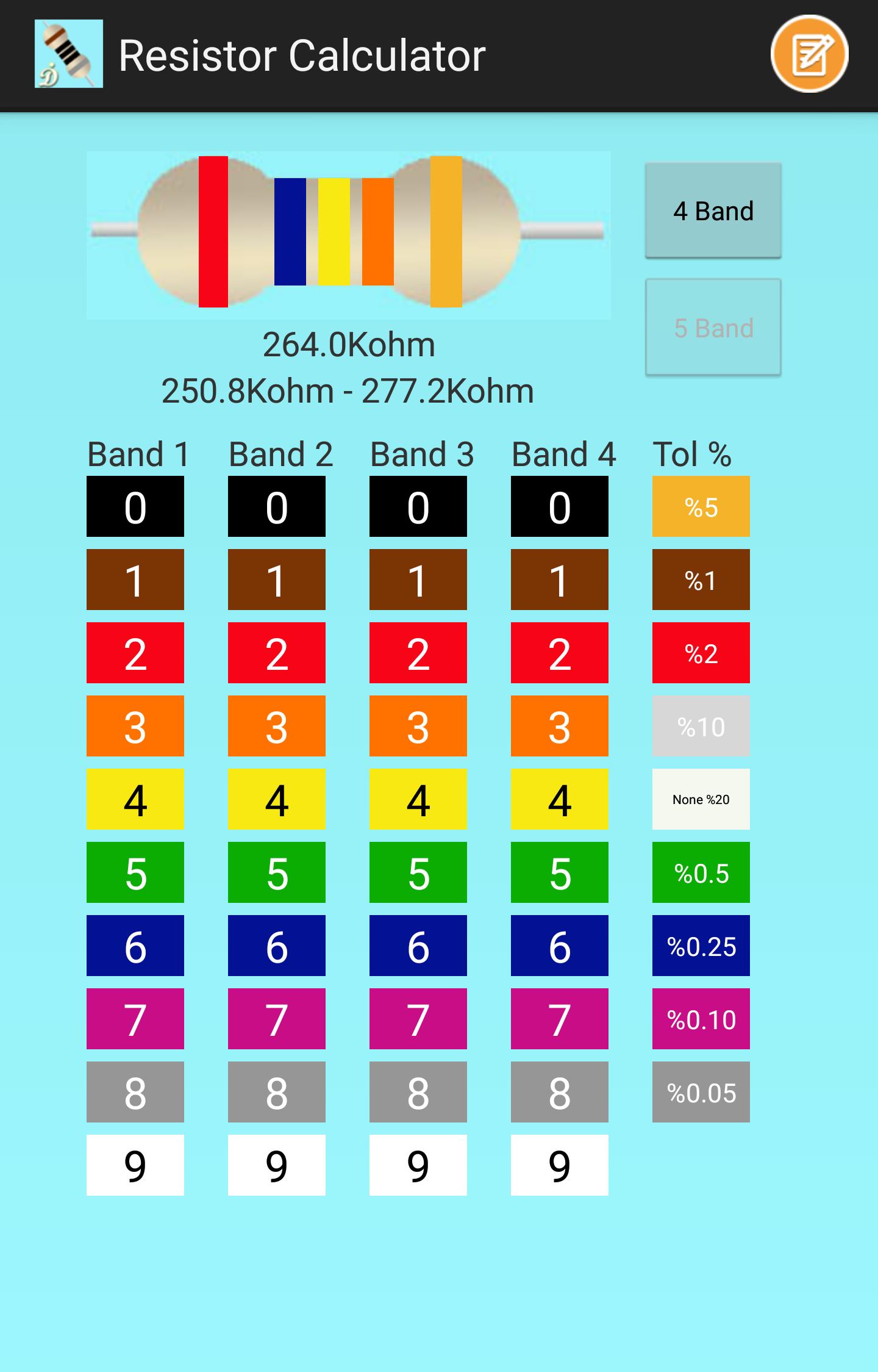- 5 Band Resistor Color Code Calculator software, free download 2012
- 5 Band Resistor Color Code Calculator software, free download Windows 7
5 Band Resistor Color Code Calculator software, free download 2012

What are resistor color codes used for? For very small electronic components a color code instead of printed text is used to indicate the value, rating or and tolerance. Resistors come in variations with 4, 5 or more color bands where a 4-band color code is most common. Resistor Colour Code Solver is a featured resistor value calculator which offers both color code to value and value to color code conversions. Both of these conversions are available for 4 band, 5 band, and 6 band resistors. In this software, you have 8 color codes for tolerance level, which include brown, red, green, blue, violet, silver, gold, and grey. A resistor is identified by its pattern of color of bands. There are 4, 5 and 6 band resistors. To calculate the resistance of a resistor, you can select the appropriate color bands in the above resistor color code calculator. Resistor Color Code may suit anyone involved in Electronics whether he is a student or a professional. Having a unique purpose, the software is lightweight and does not consume lots of CPU resources. Enter the color of your resistor and Resistor Color. Our Resistor Color Code Calculator is a handy tool for reading carbon-composition resistors whether it's a 4-band, 5-band or 6-band type. To use this tool, simply click on a particular color and number and watch how the actual bands on the resistor illustration change.
How does the resistor color code work? Check out All About Circuits Resistor Color Code Calculator, a handy tool for reading resistor color code values. Resistor values are often indicated with color codes. Practically all leaded resistors with a power rating up to one watt are marked with color bands. The coding is defined in the international standard IEC 60062. This standard describes the marking codes for resistors and capacitors. It includes also numerical codes, as for example often used for SMD resistors. The color code is given by several bands. Together they specify the resistance value, the tolerance and sometimes the reliability or failure rate. The number of bands varies from three till six. As a minimum, two bands indicate the resistance value and one band serves as multiplier. The resistance values are standardized, these values are called preferred value. Resistor color code chart The chart below shows how to determine the resistance and tolerance for resistors. The table can also be used to specify the color of the bands when the values are known. An automatic resistor calculator can be used to quickly find the resistor values. [embedit snippet='adsense'] Tips for reading resistor codes In the sections below examples are given for different numbers of bands, but first some tips are given to read the color code: The reading direction might not always be clear. Sometimes the increased space between band 3 and 4 give away the reading direction. Also, the first band is usually the closest to a lead. A gold or silver band (the tolerance) is always the last band. It is a good practice to check the manufacturer’s documentation to be sure about the used coding system. Even better is to measure the resistance with a multi-meter. In some cases this might even be the...